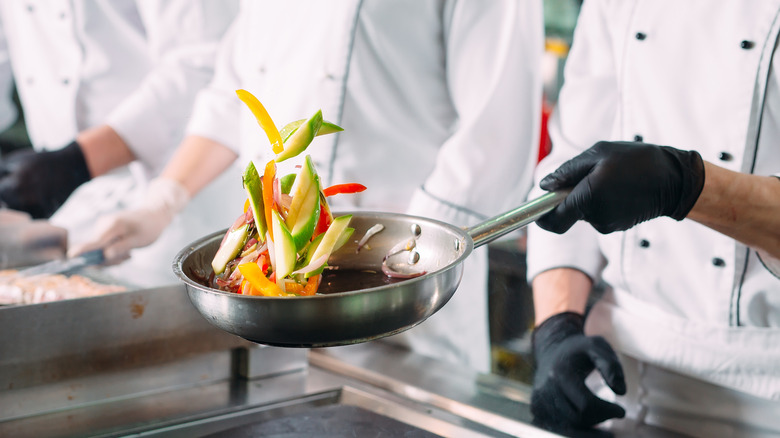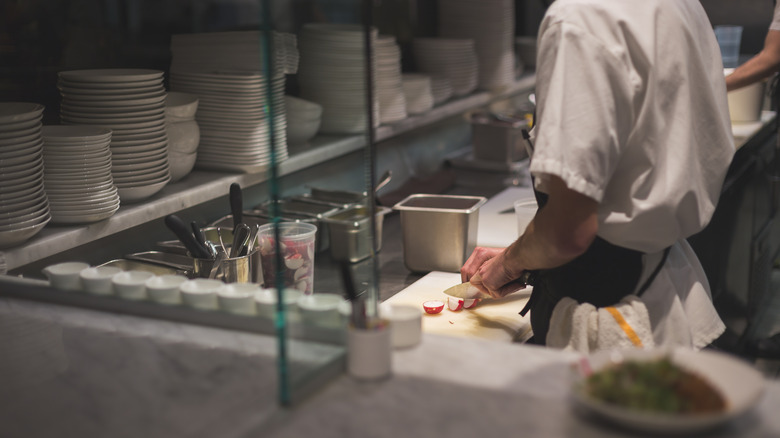What Does A Line Cook Actually Do?
A professional kitchen is one of the most exciting, engaging, and downright terrifying workplaces imaginable. Popular shows like Kitchen Confidential and FX's The Bear have given the public a peek at the stressors inherent in the restaurant business –- the rush to complete each dish in time, the aggravation of certain customers, and the constant presence of fire and knives. A kitchen is an inherently chaotic place, and making it work requires a carefully organized system with precisely-defined roles.
Fine dining restaurants run their kitchens by a system called Brigade de Cuisine. Developed by the renowned French chef Auguste Escoffier, the brigade establishes a clear chain of command in the kitchen. Examples of different positions in the hierarchy include the boucher (butcher), boulanger (baker), and pâtissier (pastry chef) — although the exact roles may vary depending on the restaurant's needs and resources (via MasterClass). Certain roles are so essential as to feature in almost every professional kitchen. The Parisian culinary school Le Cordon Bleu lists some of the most vital as the chef executif, who is typically the most senior member of the team and occupies a more business-oriented role. Another prominent role is the chef de cuisine, or head chef, who primarily supervises the other kitchen staff. Then there's the sous chef, who is the head chef's second-in-command; and the commis, also known as a line cook. This last role may not be considered the most glamorous, but line cooks are the lifeblood of every kitchen.
Line cooks do most of the actual cooking
The more senior positions in the Brigade de Cuisine hierarchy serve primarily to supervise and direct activities in the kitchen, but the line cooks do the most hands-on work. The Auguste Escoffier School of Culinary Arts explains that line cooks need to be able to fill many roles in the kitchen, and their duties may change from night to night. Each line cook is typically assigned to a specialized station, for example, tending the stove or mixing sauces. When all these stations work together, it forms an assembly line that turns out meals quickly and efficiently.
Common tasks for line cooks include prep work (such as chopping vegetables or butchering meat) cooking individual elements of a dish, and cleanup (via MasterClass). But ultimately, a line cook's duties are dependent on the direction of the head chef. A line cook's day is generally a long one, with shifts upwards of 11 hours, as Nana Araba Wilmot, a line cook at New York's Le Coucou told Bon Appétit. Wilmot's shifts typically begin by preparing everything that can be made ahead of the dinner service. When the customers arrive, the line cooks receive copies of their orders on a ticket and prepare whatever portion of the dish their station is responsible for. The night ends with line chefs 'breaking down' their stations — cleaning the space and packing up their tools — followed, presumably, by a very deep sleep.

